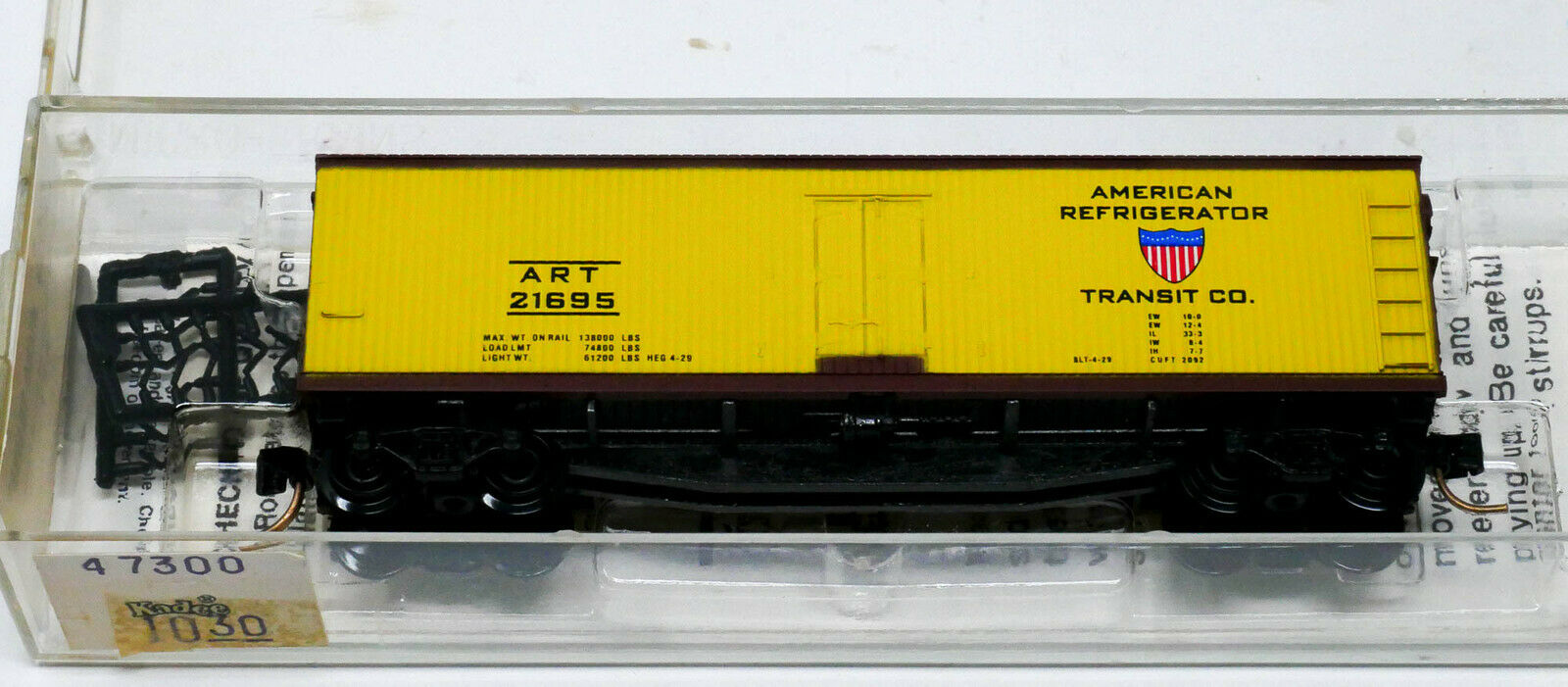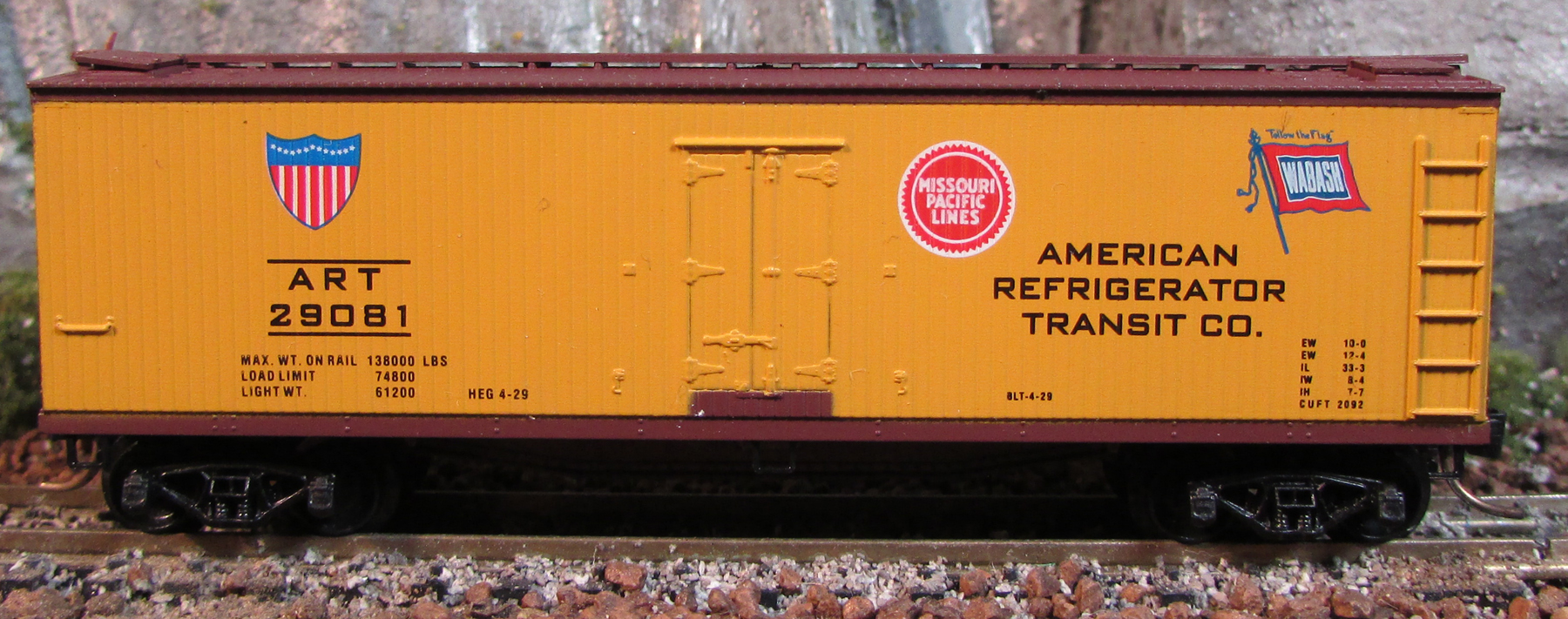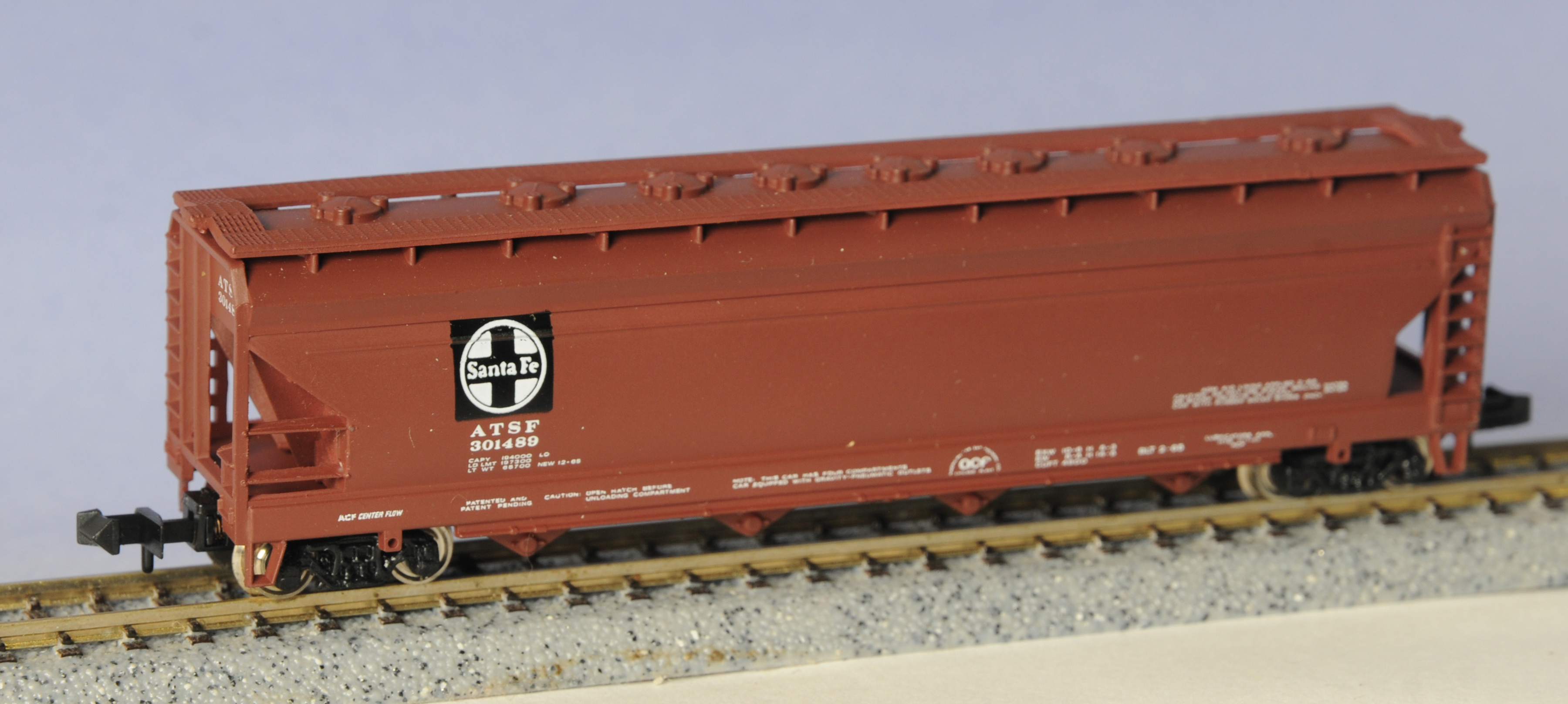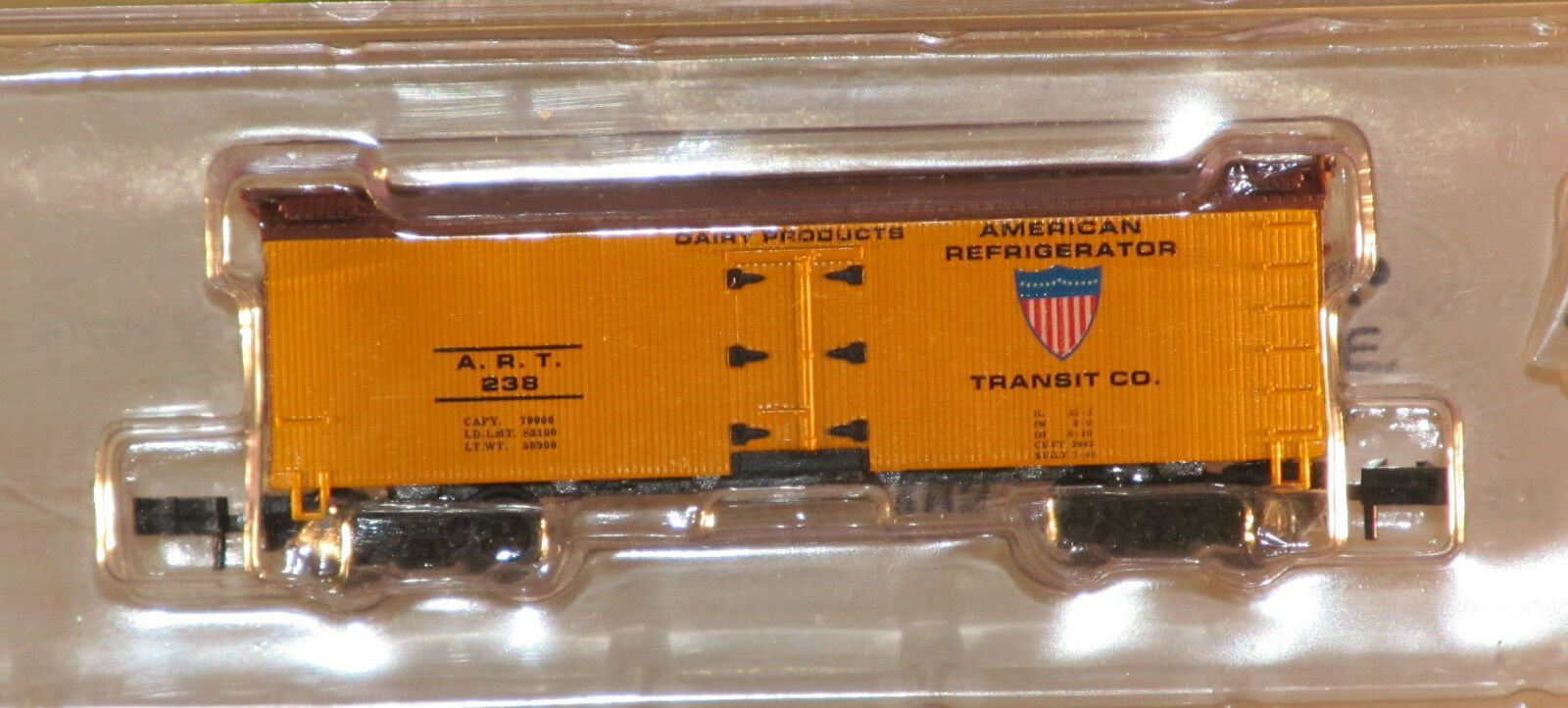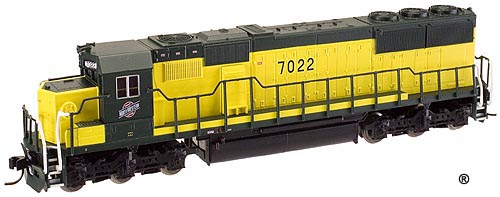Model Information: The "35" series "Offset" Cupola Caboose is an early Atlas body style introduced between 1979 and 1982. It replaced the earlier 6-window version of the offset cupola caboose that was made for Atlas by Roco. The model was first manufactured in Atlas' New Jersey facility but later moved to China. Its cupola is located towards one end of the body hence the nickname "End" or "Offset" Cupola Caboose. This body style has a roofwalk. It has five windows on one side and three on the other (hence it is known as the 8-Window version) as well as two separated windows on each side of the Cupola. It has ladders on each end which do NOT loop over the ends onto the roof.
Prototype History: The origins of the railroad caboose appear to date back to the 1840s when Nat Williams, a conductor of the Auburn & Syracuse Railroad (a later affiliate of the New York Central) became fed up with cramped and uncomfortable quarters to do paperwork (a common job of the conductor, whose responsibility is general oversight and control of a train, passenger or freight), which was usually done in either a free space of a passenger car or combine/baggage car. To fix this problem, Williams found an unused boxcar and using a simple box and barrel, as a seat and desk, set up shop in the car to do his duties. Not only did he find out he had plenty of room to work but also figured that he could use the unused space to store tools (flags, lanterns, spare parts, etc.) and other essentials to have on board whenever needed (such things become commonly stored on the caboose).
Perhaps the most striking feature ever applied to the railroad caboose was its cupola. According to the story, conductor T.B. Watson of the Chicago & North Western in the 1860s reportedly used a hole in a boxcar’s roof (which he was using as a caboose) to get a better vantage point of the train ahead. It is said that Watson was amazed by the view afforded from the position being able to not only see the train ahead but also from all sides, and to the rear as well. He apparently convinced C&NW shop forces to construct a type of open observation box onto an existing singe-level caboose with windows all around where one could sit and view their surroundings. The rest, as they say, is history and the common cupola was born.
Steel Cabooses replaced their wood-sheathed brethren after the second world war when the steel glut made the production and maintenance of steel cabooses far more efficient than wooden models. With the advancement of the End-of-Train device, cabooses slowly began to fall out of favor. However, in the early 2000’s, “shoving platforms” began to appear as a place to safely house a crew when a reverse move was required. Instead of riding on the side of a freight car, the crew member now has a safe place to stand, while guiding the rear of a reverse move.
Perhaps the most striking feature ever applied to the railroad caboose was its cupola. According to the story, conductor T.B. Watson of the Chicago & North Western in the 1860s reportedly used a hole in a boxcar’s roof (which he was using as a caboose) to get a better vantage point of the train ahead. It is said that Watson was amazed by the view afforded from the position being able to not only see the train ahead but also from all sides, and to the rear as well. He apparently convinced C&NW shop forces to construct a type of open observation box onto an existing singe-level caboose with windows all around where one could sit and view their surroundings. The rest, as they say, is history and the common cupola was born.
Steel Cabooses replaced their wood-sheathed brethren after the second world war when the steel glut made the production and maintenance of steel cabooses far more efficient than wooden models. With the advancement of the End-of-Train device, cabooses slowly began to fall out of favor. However, in the early 2000’s, “shoving platforms” began to appear as a place to safely house a crew when a reverse move was required. Instead of riding on the side of a freight car, the crew member now has a safe place to stand, while guiding the rear of a reverse move.
Road Name History: 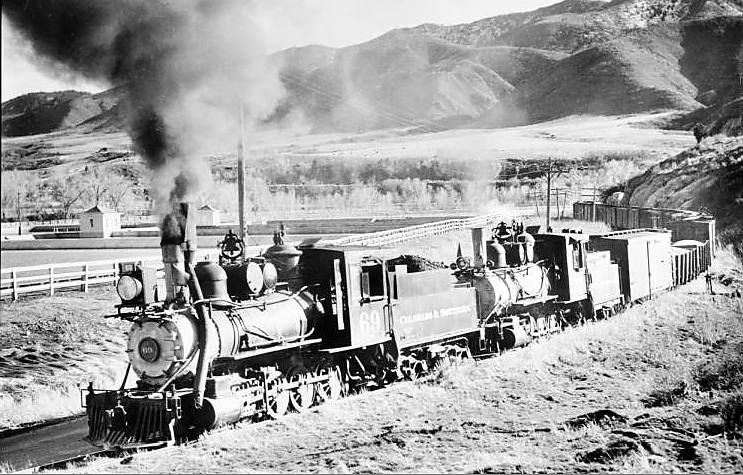 C&S was formed in 1898 with the consolidation of the Union Pacific Denver & Gulf and the Denver Leadville & Gunnison, both of whom had been under the control of Union Pacific prior to falling into receivership. C&S was best known for their 3’ gauge lines built westward from Denver by the Colorado Central (the so called “Clear Creek Lines” to Black Hawk, Central City, and Georgetown including the famous Georgetown Loop) and the Denver South Park & Pacific (southwest to Como, Climax, Leadville and for a short time, Gunnison.) However, the narrow gauge portion was a small fraction of the Colorado & Southern system.
C&S was formed in 1898 with the consolidation of the Union Pacific Denver & Gulf and the Denver Leadville & Gunnison, both of whom had been under the control of Union Pacific prior to falling into receivership. C&S was best known for their 3’ gauge lines built westward from Denver by the Colorado Central (the so called “Clear Creek Lines” to Black Hawk, Central City, and Georgetown including the famous Georgetown Loop) and the Denver South Park & Pacific (southwest to Como, Climax, Leadville and for a short time, Gunnison.) However, the narrow gauge portion was a small fraction of the Colorado & Southern system.
The standard gauge portion started from a point north of Wendover, Wyoming south through Cheyenne, Denver, Colorado Springs, Pueblo, Trinidad and on to Texline on the New Mexico – Texas border. There they connected with their subsidiary Fort Worth & Denver City Railway to Fort Worth and other Texas cities. C&S also controlled the Trinity & Brazos Valley which gave them friendly connections all the way to the port of Galveston. (We’ll cover the FW&D, T&BV and other C&S subsidiaries on future RRotD’s.) The mainline also included the famous “joint line” used by C&S, Santa Fe, and Rio Grande between Denver and Pueblo.
In 1908, Chicago Burlington & Quincy (who connected with C&S in Denver, Cheyenne and Wendover) bought about two thirds of C&S shares and took control. CB&Q was jointly controlled by Great Northern and Northern Pacific and the goal was to secure a through route from the Pacific Northwest to the Gulf of Mexico. C&S adopted CB&Q practices for steam locomotive designs and before long the “Burlington Route” shield appeared on tenders but with C&S lettering on the cabs. Other than that, C&S and FW&D were left to manage their own affairs to a large extent.
In 1937, the old South Park narrow gauge mainline was abandoned leaving only a short stub between Climax and Leadville to connect a molybdenum mine to a standard gauge Rio Grande branch. Four years later, the Clear Creek lines were abandoned and the Climax branch was standard gauged bringing an end to all C&S narrow gauge operations. The Climax branch would go on to host the last regular standard gauge freight service with a steam locomotive by a Class 1 railroad. 2-8-0 #641 would last drop its fire on October 11, 1962.
C&S pressed on through the diesel era with locomotives in CB&Q and later successor Burlington Northern paint but sub-lettered for C&S. Colorado & Southern was finally merged into Burlington Northern on the last day of 1981.

The standard gauge portion started from a point north of Wendover, Wyoming south through Cheyenne, Denver, Colorado Springs, Pueblo, Trinidad and on to Texline on the New Mexico – Texas border. There they connected with their subsidiary Fort Worth & Denver City Railway to Fort Worth and other Texas cities. C&S also controlled the Trinity & Brazos Valley which gave them friendly connections all the way to the port of Galveston. (We’ll cover the FW&D, T&BV and other C&S subsidiaries on future RRotD’s.) The mainline also included the famous “joint line” used by C&S, Santa Fe, and Rio Grande between Denver and Pueblo.
In 1908, Chicago Burlington & Quincy (who connected with C&S in Denver, Cheyenne and Wendover) bought about two thirds of C&S shares and took control. CB&Q was jointly controlled by Great Northern and Northern Pacific and the goal was to secure a through route from the Pacific Northwest to the Gulf of Mexico. C&S adopted CB&Q practices for steam locomotive designs and before long the “Burlington Route” shield appeared on tenders but with C&S lettering on the cabs. Other than that, C&S and FW&D were left to manage their own affairs to a large extent.
In 1937, the old South Park narrow gauge mainline was abandoned leaving only a short stub between Climax and Leadville to connect a molybdenum mine to a standard gauge Rio Grande branch. Four years later, the Clear Creek lines were abandoned and the Climax branch was standard gauged bringing an end to all C&S narrow gauge operations. The Climax branch would go on to host the last regular standard gauge freight service with a steam locomotive by a Class 1 railroad. 2-8-0 #641 would last drop its fire on October 11, 1962.
C&S pressed on through the diesel era with locomotives in CB&Q and later successor Burlington Northern paint but sub-lettered for C&S. Colorado & Southern was finally merged into Burlington Northern on the last day of 1981.
Brand/Importer Information: In 1924 Stephan Schaffan, Sr. founded the Atlas Tool Company in Newark, New Jersey. In 1933 his son, Stephan Schaffan, Jr., came to work for his father at the age of sixteen. Steve Jr. built model airplanes as a hobby and frequented a local hobby shop. Being an enterprising young man, he would often ask the owner if there was anything he could do to earn some extra spending money. Tired of listening to his requests, the hobby-store owner threw some model railroad track parts his way and said, "Here, see if you can improve on this".
In those days, railroad modelers had to assemble and build everything from scratch. Steve Jr. created a "switch kit" which sold so well, that the entire family worked on them in the basement at night, while doing business as usual in the machine shop during the day.
Subsequently, Steve Jr. engineered the stapling of rail to fiber track, along with inventing the first practical rail joiner and pre-assembled turnouts and flexible track. All of these products, and more, helped to popularize model railroading and assisted in the creation of a mass-market hobby. The budding entrepreneur quickly outgrew the limitations of a basement and small garage operation. Realizing they could actually make a living selling track and related products, Steve and his father had the first factory built in Hillside, New Jersey at 413 Florence Avenue in 1947. On September 30, 1949, the Atlas Tool Company was officially incorporated as a New Jersey company.
In 1985, Steve was honored posthumously for his inventions by the Model Railroad Industry Association and was inducted into the Model Railroad Industry Hall of Fame in Baltimore, Maryland. In addition, Steve was nominated and entered into the National Model Railroad Association Pioneers of Model Railroading in 1995.
In the early 1990s, the Atlas Tool Company changed its name to Atlas Model Railroad Company, Inc.
In those days, railroad modelers had to assemble and build everything from scratch. Steve Jr. created a "switch kit" which sold so well, that the entire family worked on them in the basement at night, while doing business as usual in the machine shop during the day.
Subsequently, Steve Jr. engineered the stapling of rail to fiber track, along with inventing the first practical rail joiner and pre-assembled turnouts and flexible track. All of these products, and more, helped to popularize model railroading and assisted in the creation of a mass-market hobby. The budding entrepreneur quickly outgrew the limitations of a basement and small garage operation. Realizing they could actually make a living selling track and related products, Steve and his father had the first factory built in Hillside, New Jersey at 413 Florence Avenue in 1947. On September 30, 1949, the Atlas Tool Company was officially incorporated as a New Jersey company.
In 1985, Steve was honored posthumously for his inventions by the Model Railroad Industry Association and was inducted into the Model Railroad Industry Hall of Fame in Baltimore, Maryland. In addition, Steve was nominated and entered into the National Model Railroad Association Pioneers of Model Railroading in 1995.
In the early 1990s, the Atlas Tool Company changed its name to Atlas Model Railroad Company, Inc.
Item created by: trainnut3500 on 2016-08-25 11:14:59. Last edited by gdm on 2018-02-19 16:59:15
If you see errors or missing data in this entry, please feel free to log in and edit it. Anyone with a Gmail account can log in instantly.
If you see errors or missing data in this entry, please feel free to log in and edit it. Anyone with a Gmail account can log in instantly.





